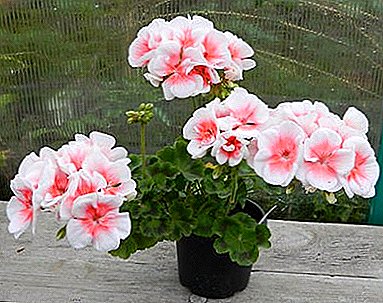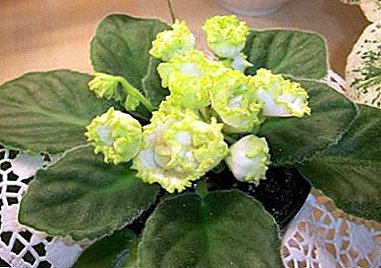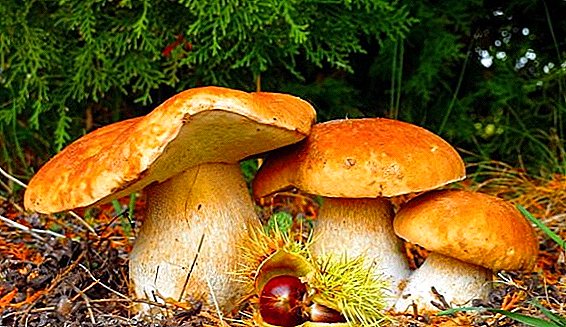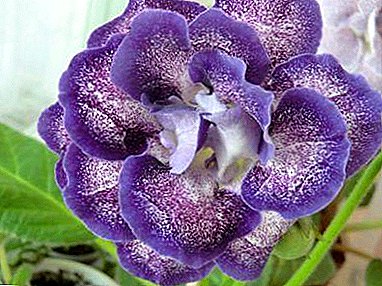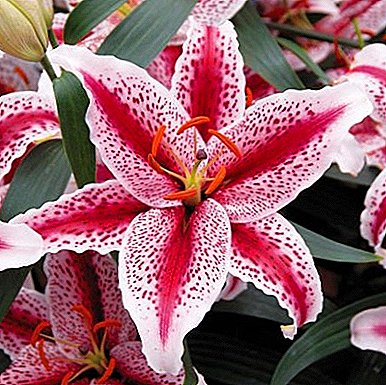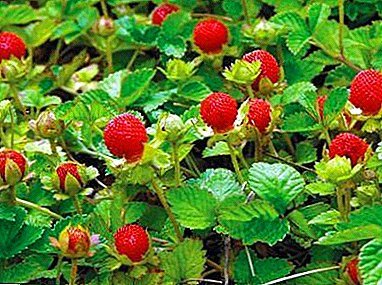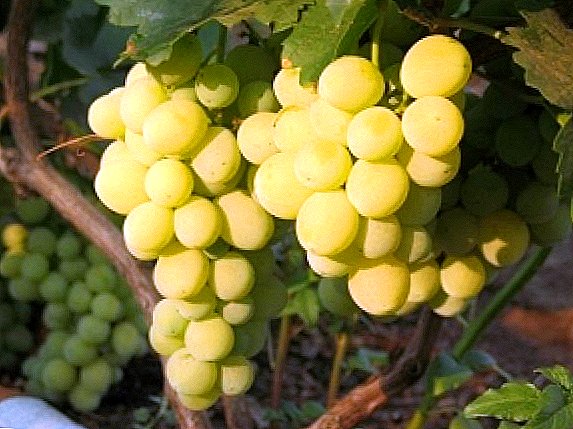 Rose is not in vain considered the queen of flowers. There are about 10 thousand varieties in the world, but in this article we will talk only about one of them - about the hybrid tea rose called “Abracadabra”, the incredible coloring of which will not leave anyone indifferent.
Rose is not in vain considered the queen of flowers. There are about 10 thousand varieties in the world, but in this article we will talk only about one of them - about the hybrid tea rose called “Abracadabra”, the incredible coloring of which will not leave anyone indifferent.
Description of the variety and photos
This variety is considered relatively young, since Californian breeders bred it about 20 years ago. The variety Abracadabra is represented by a perennial plant growing in the form of a shrub or in the form of a tree.
Its height reaches 150 cm. The flowers are large - 8-12 cm, mostly singly located on the peduncle. Petals - pointed.
Did you know? In Japan, there is an interesting sort of Chameleon - in the morning the petals are bright red in color, and in the evening they change their color to snow-white.
 The color of the rose itself is curious - various combinations of red, white, yellow, purple flowers are possible. Each petal is decorated with colorful multicolored stripes.
The color of the rose itself is curious - various combinations of red, white, yellow, purple flowers are possible. Each petal is decorated with colorful multicolored stripes.Check out these varieties of hybrid tea roses such as "Kerio", "Chopin", "Sophia Loren", "Double Delight".
Preservation before landing
Suppose you have purchased the long-awaited Abracadabra saplings, and the time for planting in open ground has not yet arrived, or the soil has not been prepared, which means that they must be somehow preserved.
Let's find out what to do in such situations:
- Prikopny method. This option is suitable when your seedlings need to wait out the winter. First you need to find a place in the garden where there is unmelted snow. Then, put the seedling into the dug hole (do not tear the package) and sprinkle it with the top. Thus, your rose will wait for spring heat and transplant to a flower bed. Prikop's method is suitable even if the growth of buds is activated on seedlings, but their size should not exceed 1 cm.
- Using the refrigerator. Before sending the roses to the fridge, you need to prepare an earthen room. If it is too wet, it is dried. Without this, the roots will start to rot. If the earthen clod is dry, additionally moisten it, for example, by spraying. The main sign of a lack of moisture is the wrinkled skin on the stems. After the procedures, the seedlings are wrapped in wet paper and placed in a section with zero temperature. Thus they can be stored in the basement or garage, as long as it is cool and dark.
Important! If you have cold winters in your area (the temperature drops below - 10WITH), shrub need to cover. For example, he will hide his lapnik from frost well.
- Transplant in pots. This method is suitable if shoots and buds began to grow actively in seedlings, and it is still early to transplant to open ground. The main condition is the absence of light for the rose to slow down its growth. The container for overexposure should be large in size to avoid injury to the root system of the rose. The soil should be nutritious, well drained. After planting in a container, the plant is covered with a bag and stored at a temperature not higher than + 10 ° C.
Planting flower
The place for planting Abracadabra rose should be sunny, well blown from all sides. Air flows help the plant to dry quickly after rain or morning dew, and excess moisture can provoke various diseases. The soil for the variety must be fertile. Immediately before planting, the planting site of the seedlings is dug up, fertilized (using humus or compost), and drainage is laid out at the bottom of the hole.
The seedlings themselves also need special training before planting in open ground. They are soaked in water overnight. After, the seedling gently spread in the hole, the roots gently straighten. From above they are covered with earth, tamped and watered abundantly.
Important! If the soil is clay - add peat fertilizer. This will provide her with the necessary friability.
Further care
The rose of Abracadabra is an unusual and beautiful flower, and the further description of its planting and subsequent care will allow you to grow it on your own plot without the hassle:
- Top dressing. During the growing season you can do 4 dressing. Roses love organic fertilizer (mullein solution). It is prepared as follows: cow dung is poured with water (1: 3 ratio), then organic fertilizer is added (1.5 g / 1 l). The resulting solution is left for 2 weeks. Before fertilizing, dilute it with water (1:10 ratio) and the recipe for the best fertilizer for roses is finished. In late autumn, as preparation for the winter, roses are fed with fertilizers containing potassium.

- Watering. Watering a rose should be regularly, but should be avoided remoistening. The best time is early morning. Watering is needed under the very bush of the plant. If a crust forms near the roots, it should be loosened. Mulching will help avoid the formation of an earth crust after watering. Normally, weekly fluid application will be sufficient.

- Crop. With the arrival of autumn, hybrid tea varieties need pruning. Shoots are removed until the middle of the branch. Pruning should be done in dry weather. The cut is made under an inclination that in this place there was no excess moisture.

- Preventive measures include: planting flowers in sunny areas, competent watering, timely cutting of shrubs and their treatment from pests.
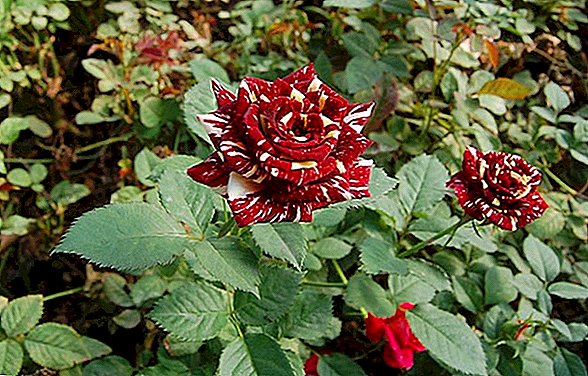
Did you know? Rose oil on the market is more expensive than platinum. To get 1 kg of rose oil requires about 3 tons of rose petals.In conclusion, it should be noted that in landscape design, the Abracadabra rose looks especially beautiful against the background of climbing varieties, and detailed descriptions of possible flower compositions can be found in garden catalogs.






